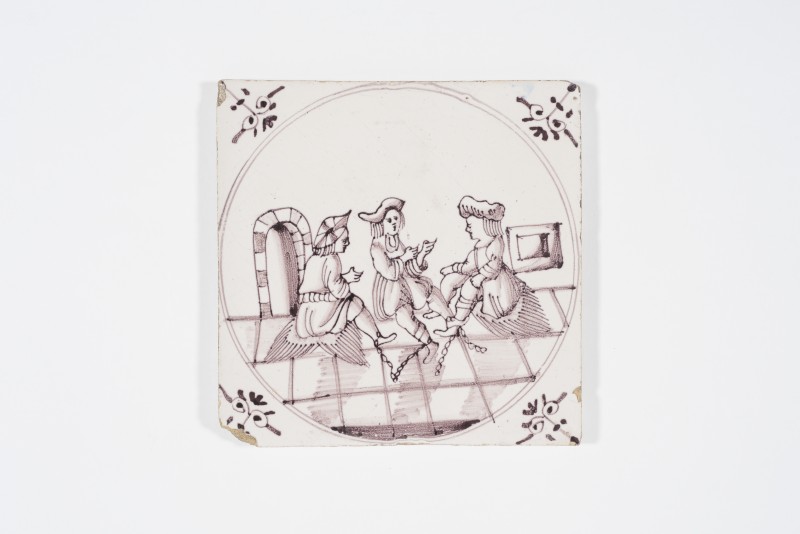Quadratische Fliese mit der von zwei konzentrischen Kreisen eingefassten Darstellung Josephs, der die Träume des Bäckers und des Mundschenks deutet. Alle Personen sitzen auf dem Boden und sind an den Beinen angekettet. Im Hintergrund ein Tor und ein Fenster. In den Ecken Ochsenkopfmotive.
Glasurabplatzungen und ein großer Ausbruch in der linken unteren Ecke.
Hergestellt in Delft oder Rotterdam
Ankauf von Rudolf Thalacker, Leipzig, 1911
en

